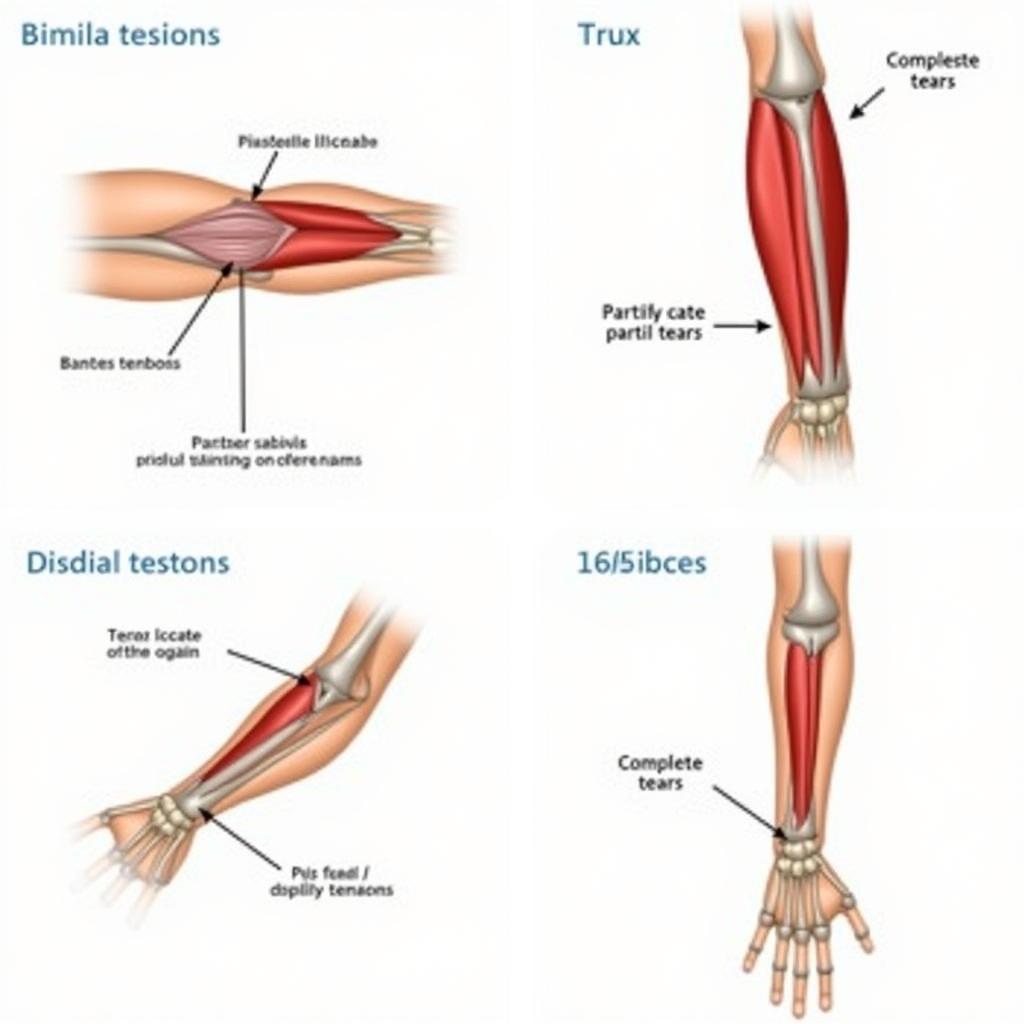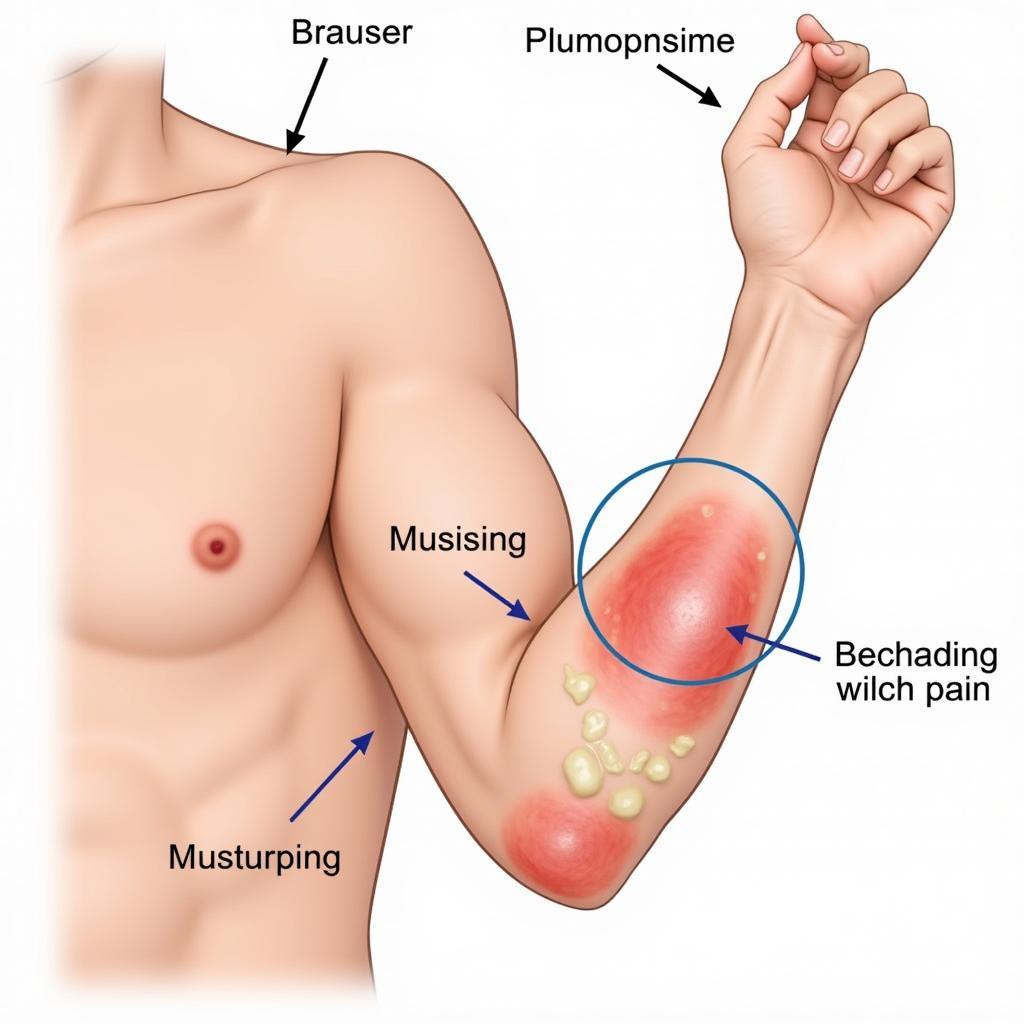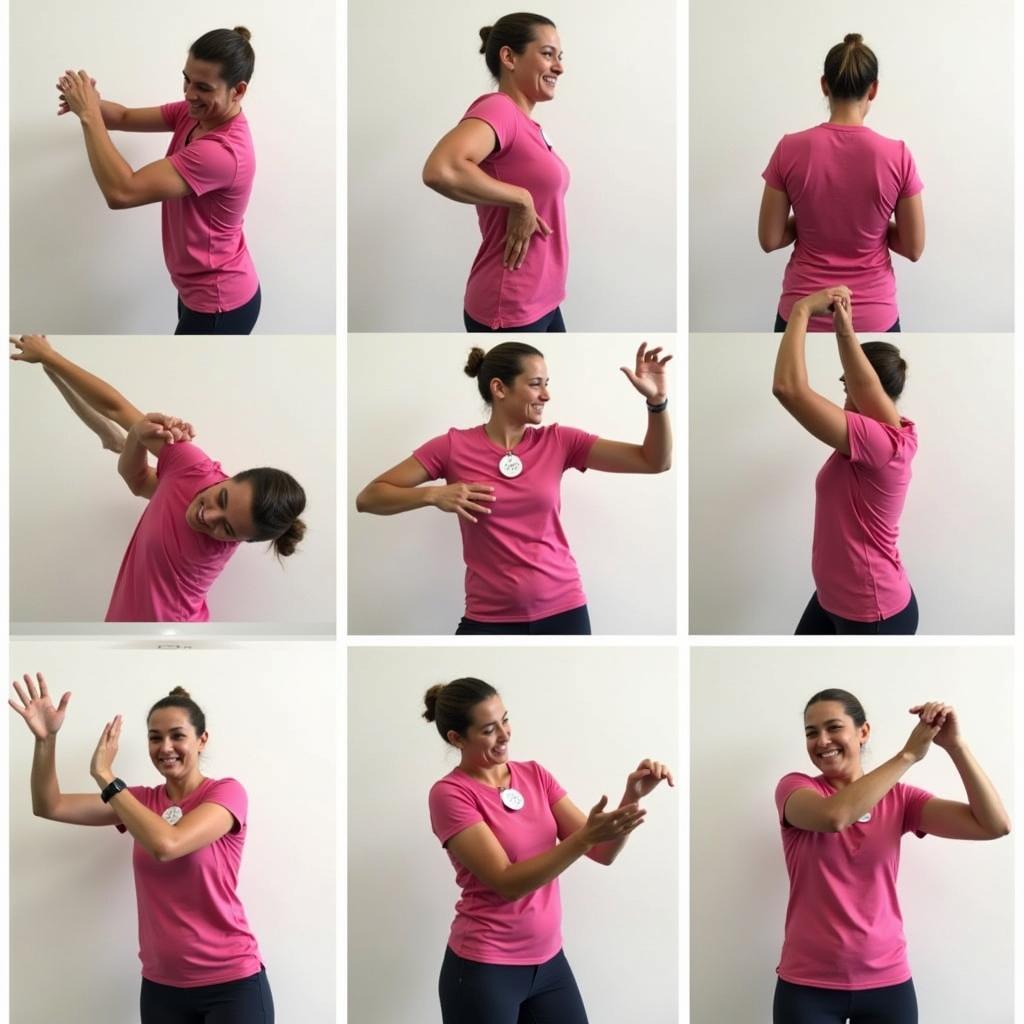Understanding and Managing Biceps Lesions
October 31, 2024Biceps lesions, whether a partial tear or a complete rupture, can be a significant setback for anyone, especially athletes. This article aims to provide a comprehensive overview of biceps lesions, including their causes, symptoms, diagnosis, and treatment options. We’ll explore how these injuries occur, the impact they have on daily life, and the steps you can take to recover effectively.
What are Biceps Lesions?
Biceps lesions refer to damage to the biceps muscle, most commonly in the upper arm. The biceps muscle has two tendons that attach it to the shoulder and one tendon that attaches it to the elbow. A lesion can occur in any of these tendons. These injuries can range from minor strains to complete ruptures, impacting your ability to lift, pull, and perform everyday tasks. Understanding the different types of biceps lesions is crucial for effective management.
Types of Biceps Lesions
Biceps lesions are typically categorized based on the location and severity of the injury:
- Proximal Biceps Tendon Rupture: This involves a tear in one of the tendons attaching the biceps to the shoulder.
- Distal Biceps Tendon Rupture: This occurs when the tendon attaching the biceps to the elbow is torn.
- Biceps Tendonitis: This refers to inflammation of the biceps tendon, often caused by overuse.
- Partial Biceps Tear: This is a tear that doesn’t completely sever the tendon.
Causes and Risk Factors for Biceps Lesions
Several factors can contribute to biceps lesions:
- Sudden Forceful Movements: Lifting heavy objects or engaging in high-impact sports can put excessive strain on the biceps muscle, leading to tears.
- Repetitive Motions: Overuse of the biceps, such as in certain occupations or sports, can cause tendonitis or gradual tearing.
- Age: As we age, our tendons become more susceptible to injury.
- Smoking: Smoking reduces blood flow to tendons, making them weaker and more prone to damage.
 Biceps Lesion Anatomy
Biceps Lesion Anatomy
Recognizing the Symptoms
Biceps lesions often present with distinct symptoms:
- Sudden, sharp pain in the upper arm: This can occur during the injury itself.
- Popping or snapping sensation in the arm: This is a common sign of a rupture.
- Bruising and swelling around the injured area: This is a natural response to the injury.
- Weakness in the arm: This can make it difficult to lift or rotate the arm.
- Visible deformity in the upper arm: In the case of a complete rupture, the biceps muscle may bunch up, creating a noticeable bulge.
How can you tell if you have a biceps lesion? Look for the combination of pain, weakness, and possible deformity in the upper arm.
 Symptoms of a Biceps Lesion
Symptoms of a Biceps Lesion
Diagnosis and Treatment Options
Diagnosing a biceps lesion typically involves a physical examination and imaging tests like X-rays or MRI scans. Treatment options vary depending on the severity of the injury and can include:
- Conservative Treatments: Rest, ice, compression, and elevation (RICE), along with pain relievers and physical therapy, are often effective for minor strains and tendonitis.
- Surgical Repair: In cases of complete ruptures or severe partial tears, surgery may be necessary to reattach the torn tendon.
Expert Insight
Dr. Andrea Sanchez, a renowned orthopedic surgeon specializing in sports injuries, emphasizes the importance of early diagnosis: “The sooner a biceps lesion is diagnosed, the better the chances of a successful recovery. Early intervention can help prevent long-term complications and restore full function.”
Recovering from a Biceps Lesion
Recovery from a biceps lesion takes time and dedication. Physical therapy plays a vital role in regaining strength, flexibility, and range of motion. Following your doctor’s instructions and adhering to your rehabilitation program is crucial for optimal healing.
 Physical Therapy for Biceps Lesions
Physical Therapy for Biceps Lesions
Conclusion
Biceps lesions can be painful and debilitating, but with proper diagnosis and treatment, most people can make a full recovery. Understanding the causes, symptoms, and treatment options empowers you to take proactive steps towards healing and regaining your strength. Remember, early intervention is key. Don’t hesitate to seek medical attention if you suspect you have a biceps lesion.
FAQ
- How long does it take to recover from a biceps lesion?
- What are the long-term effects of a biceps lesion?
- Can I prevent biceps lesions?
- When should I see a doctor for a biceps lesion?
- What are the risks of biceps lesion surgery?
- What are some exercises I can do to strengthen my biceps after an injury?
- Can I still play sports after a biceps lesion?
Situations Requiring Questions:
- Experiencing sudden, sharp pain in your upper arm after lifting a heavy object.
- Hearing a popping or snapping sound in your arm during physical activity.
- Noticing bruising, swelling, or deformity in your upper arm.
- Experiencing weakness and difficulty lifting or rotating your arm.
Suggested Related Articles:
- Shoulder Injuries in Athletes
- Understanding Tendonitis
- The Importance of Physical Therapy in Sports Injury Recovery
Need Support? Contact Us!
For any assistance or questions regarding Biceps Lesions, feel free to reach out to us. Call: 0963418788, Email: [email protected] or visit us at: 2M4H+PMH, Phường Nghĩa Thành, Gia Nghĩa, Đắk Nông, Việt Nam. We have a 24/7 customer support team ready to assist you.